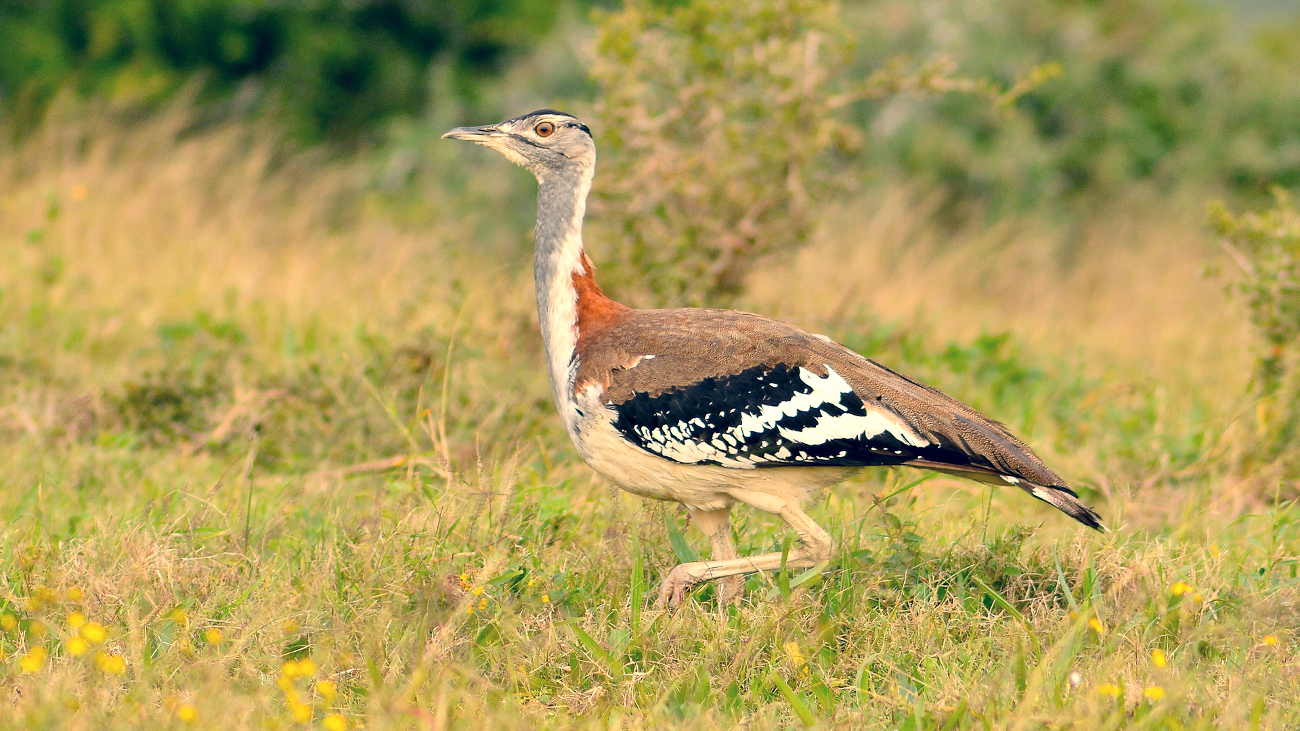- Home
- Conservancy
- Denhams Bustard
Description
Denham's bustard is the largest species in the Neotis genus, although is smaller than the bustards in the Ardeotis genus (as well as the great bustard). The male is 9 to 10 kg (20 to 22 lb) and 100–116 cm (39–46 in), the female is much smaller at 3 to 4 kg (6.6 to 8.8 lb) and 80–87 cm (31–34 in). The back is brown, darker and plainer in the male, and the underparts are white. The neck is pale grey with an orange nape. Its grey crown is bordered with black, and a black line runs through the eye with a white line forming an eyebrow above. The long legs are pale yellow. The wings are strikingly patterned in brown, white and black, the male showing more white in flight than the female or young birds. The long legs are yellowish in color and the bill is whitish horn in color.
The male inflates his throat when displaying to show a conspicuous balloon of white feathers. This species is usually silent.
Fun Facts
Denham's bustard are often solitary outside of the mating season, although they congregate at large food sources and temporarily band together for migratory movements. Migration is usually in search of food sources and follows passages of rain. This species is omnivorous, feeding on a wide variety of foods as it becomes available to them. Among the diverse foods recorded in the species are insects, small snakes, rodents, the nestlings of other birds and various green plant life.
They will sometimes follow ungulate species in order to pick dung beetles out of their droppings. Like all bustards, the male Denham's bustard performs a courtship display to attract the attention on females, on what is called a lek. During his display, the male puffs up his head and chest and flairs his tail, thus appearing larger, and calls loudly while he struts about. Breeding occurs over varied times of the year, being especially undefined in East Africa.
Breeding may brought on by presence of rainfall. The nest consists of a shallow scrape, in which the female lays one or two eggs, which (if they survive) she will raise alone.The male inflates his throat when displaying to show a conspicuous balloon of white feathers. This species is usually silent.
